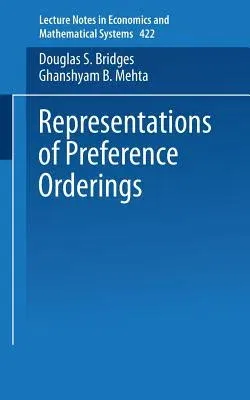Douglas S Bridges
(Author)Representations of Preferences Orderings (1995)Paperback - 1995, 6 April 1995

Qty
1
Turbo
Ships in 2 - 3 days
In Stock
Free Delivery
Cash on Delivery
15 Days
Free Returns
Secure Checkout
Part of Series
Lecture Notes in Economic and Mathematical Systems
Print Length
165 pages
Language
English
Publisher
Springer
Date Published
6 Apr 1995
ISBN-10
3540588396
ISBN-13
9783540588399
Description
Product Details
Book Edition:
1995
Book Format:
Paperback
Country of Origin:
DE
Date Published:
6 April 1995
Dimensions:
20.32 x
12.7 x
0.97 cm
ISBN-10:
3540588396
ISBN-13:
9783540588399
Language:
English
Location:
Berlin, Heidelberg
Pages:
165
Publisher:
Weight:
181.44 gm

